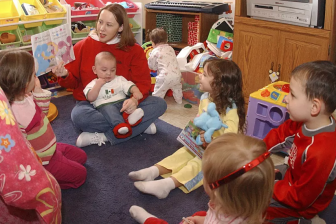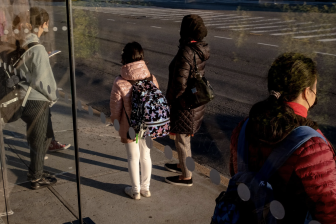
Outdoor play in shorter, more frequent windows can boost physical activity in early learning settings
Physical activity is important for early childhood development. There’s a preconceived notion that children are highly active while in childcare when often, they are not.
The good news is that when children are outdoors at childcare, they engage in 10 times as much energetic play (higher-intensity physical activity) compared to when they are indoors! With outdoor environments being preferred to indoor settings as we grapple with COVID-19, it is important to encourage outdoor play — now more than ever.
However, this is more easily said than done. Curriculum objectives in childcare programming focus on preparing children for school, and while these objectives can be integrated with outdoor planning and play, how childcare providers do this varies, says Brianne Bruijns of Western University.
In Ontario, childcare centres are required to provide 120 minutes of daily outdoor play when children are in child care for six hours or more in a day. In contrast, British Columbia requires that programs provide 60 minutes of daily outdoor play. Most provinces and territories do not provide time requirements for outdoor programming.
Research about activity levels
With colleagues, I researched how the frequency of outdoor play periods in childcare influenced children’s physical activity levels. We conducted a study in 22 childcare centres in London, Ontario; in half of the centres we shortened the duration of each outdoor play session, but doubled session frequency.
We found that children were most active within the first 10 minutes of outdoor play. In fact, 50 per cent of their first 10 minutes outdoors was spent engaging in higher-intensity physical activity, which then dropped to just 10 per cent during the remaining outdoor playtime!
Additionally, we found that restructuring outdoor play into shorter, more frequent bouts helped maximize children’s physical activity across total outdoor time, while also reducing the time children spent sitting, when compared to the traditional
outdoor play schedule.
Adapting to weather
Higher-intensity physical activity has numerous health benefits for young children, including improved cognitive development and bone and skeletal health.
Therefore, if we can maximize energetic play by simply restructuring outdoor play schedules, the benefits are definitely worth it. Breaking up outdoor play sessions can be helpful for early childhood educators who are already taxed with implementing a full curriculum, as they can dedicate the same total time to outdoor play, while maximizing its benefits for their children.
Shorter, more frequent outdoor play periods can also help educators overcome barriers such as weather as such windows may lend themselves to more creative scheduling around excessive rain, snow or extreme heat. Typically, if it’s heavily raining for a couple of hours in the afternoon, it is common to cancel outdoor play altogether.
However, scheduling 20-minute outdoor play periods on either end of the rain can help educators work around long periods of rain during their typically scheduled outdoor time. This would ensure children are receiving all of the important benefits of active outdoor play on a daily basis (and not only when the weather allows — which is important given the varied weather experienced in Canada!).
For children at home
While these research findings may only be directly applicable to childcare settings (where the majority of young children spend their weekday waking hours), young children tend to be most active during the transition to outdoors. The thrill and excitement that outdoor play provides, coupled with more space and looser rules around movement and noise levels, naturally encourages children to be more active.
As such, if children are at home, it is quite likely that they could also benefit from shorter, more frequent outdoor play periods, which may be particularly helpful for parents if they notice their children are engaging in too much sedentary or screen time during the evening or weekend hours.
Breaking up sedentary and screen time with high intensity outdoor play, if only for 10 minutes, can help boost children’s health benefits, while simultaneously preventing any unnecessary consequences from prolonged sedentary or screen time, such as delayed language development or irritable sleep patterns.
Frequent outdoor play is important for young kids. Whether at daycare or at home, breaking up sitting time and taking kids outdoors will help encourage heart-pumping physical activity and provides them with countless health benefits. So this summer, don’t discount the benefits of encouraging shorter windows of more frequent play.![]()
Brianne Bruijns, PhD Candidate in Health Promotion, Western University
This article is republished from The Conversation under a Creative Commons license. Read the original article.





